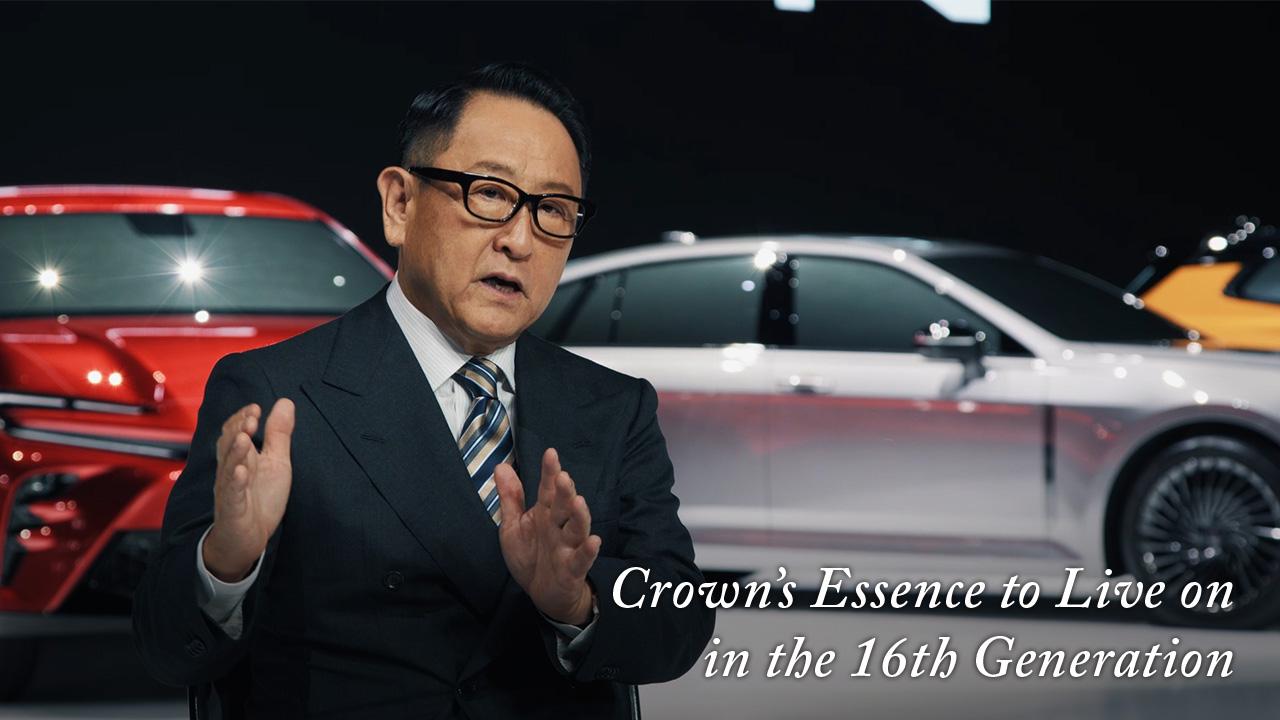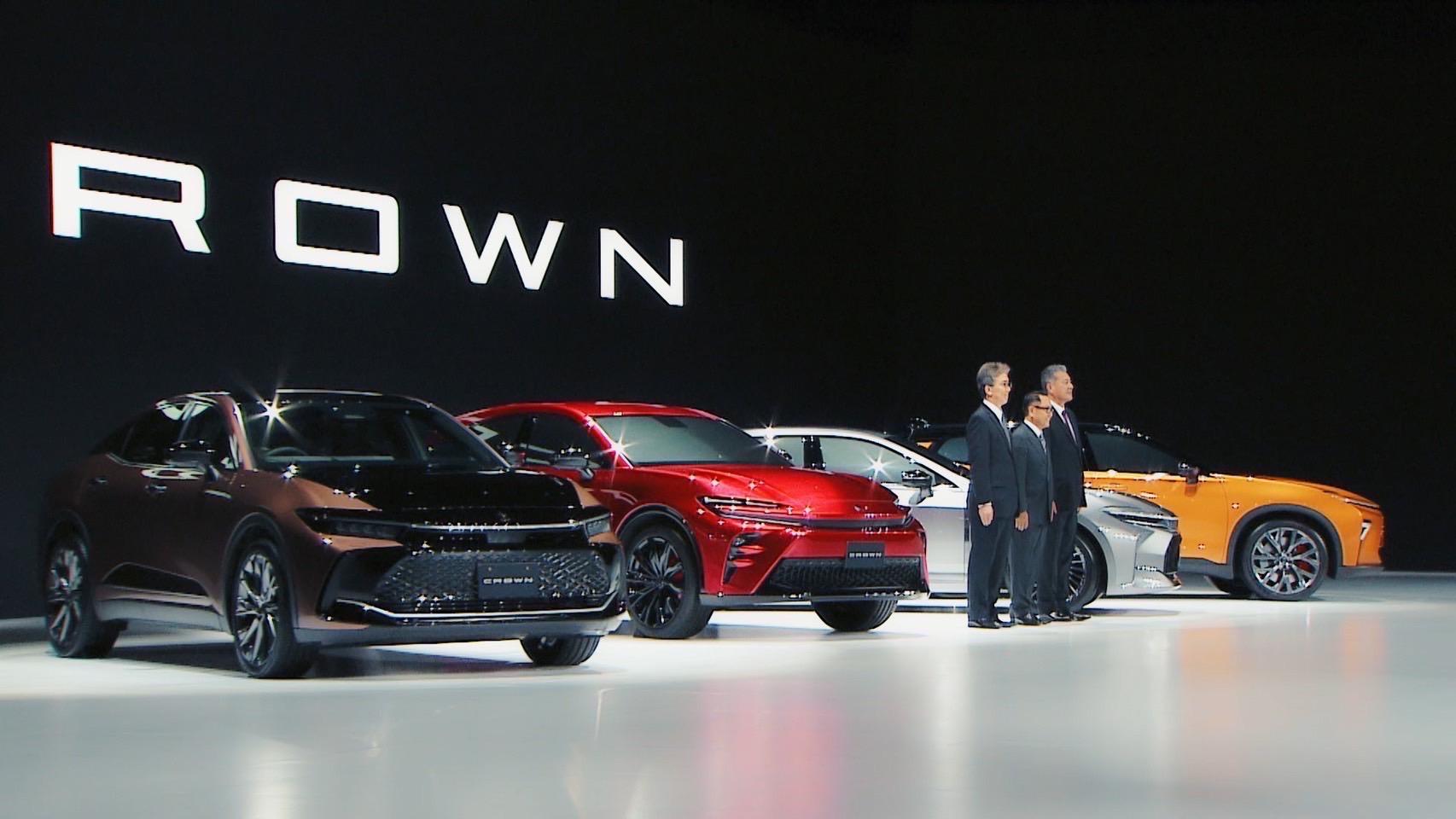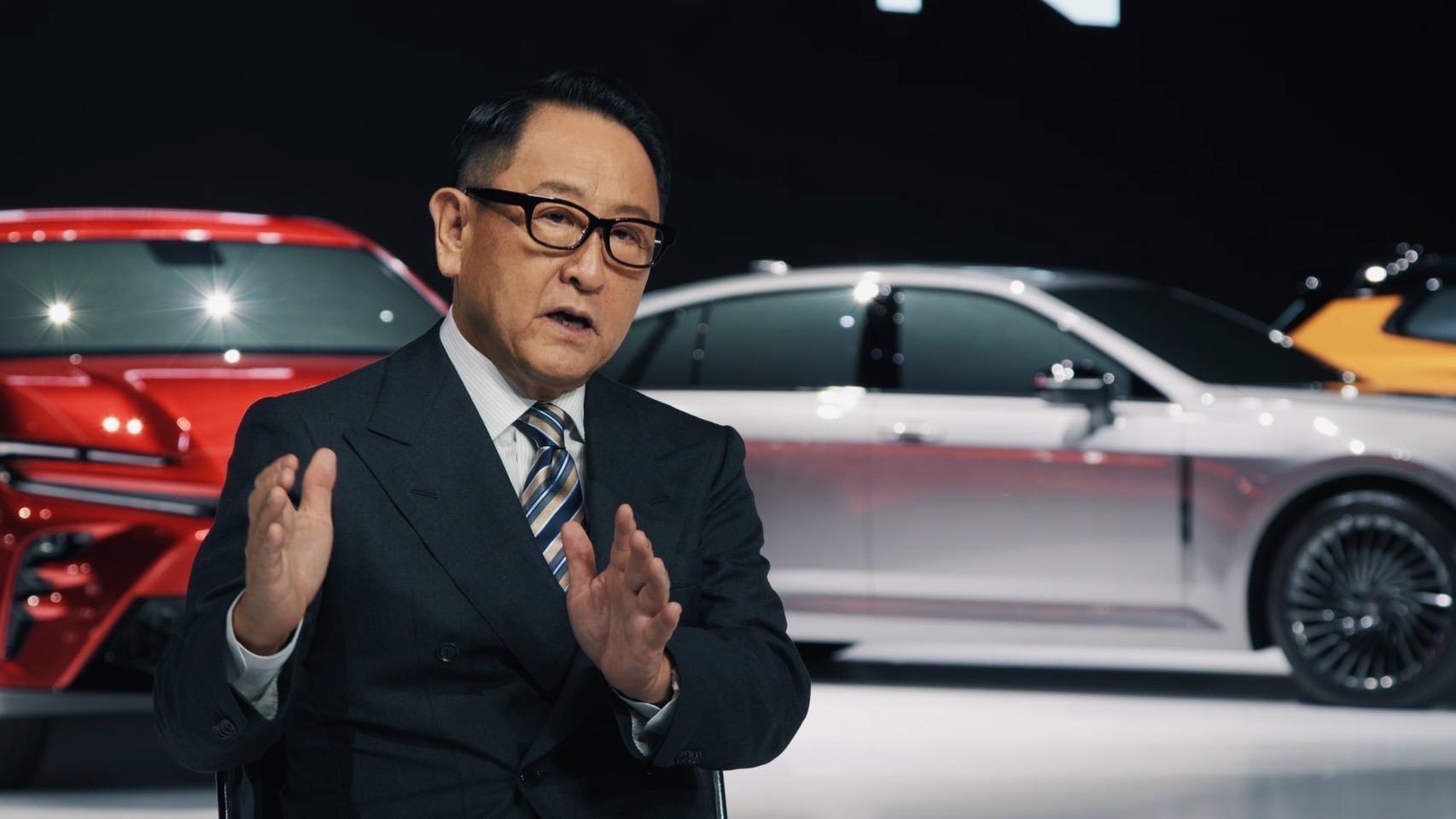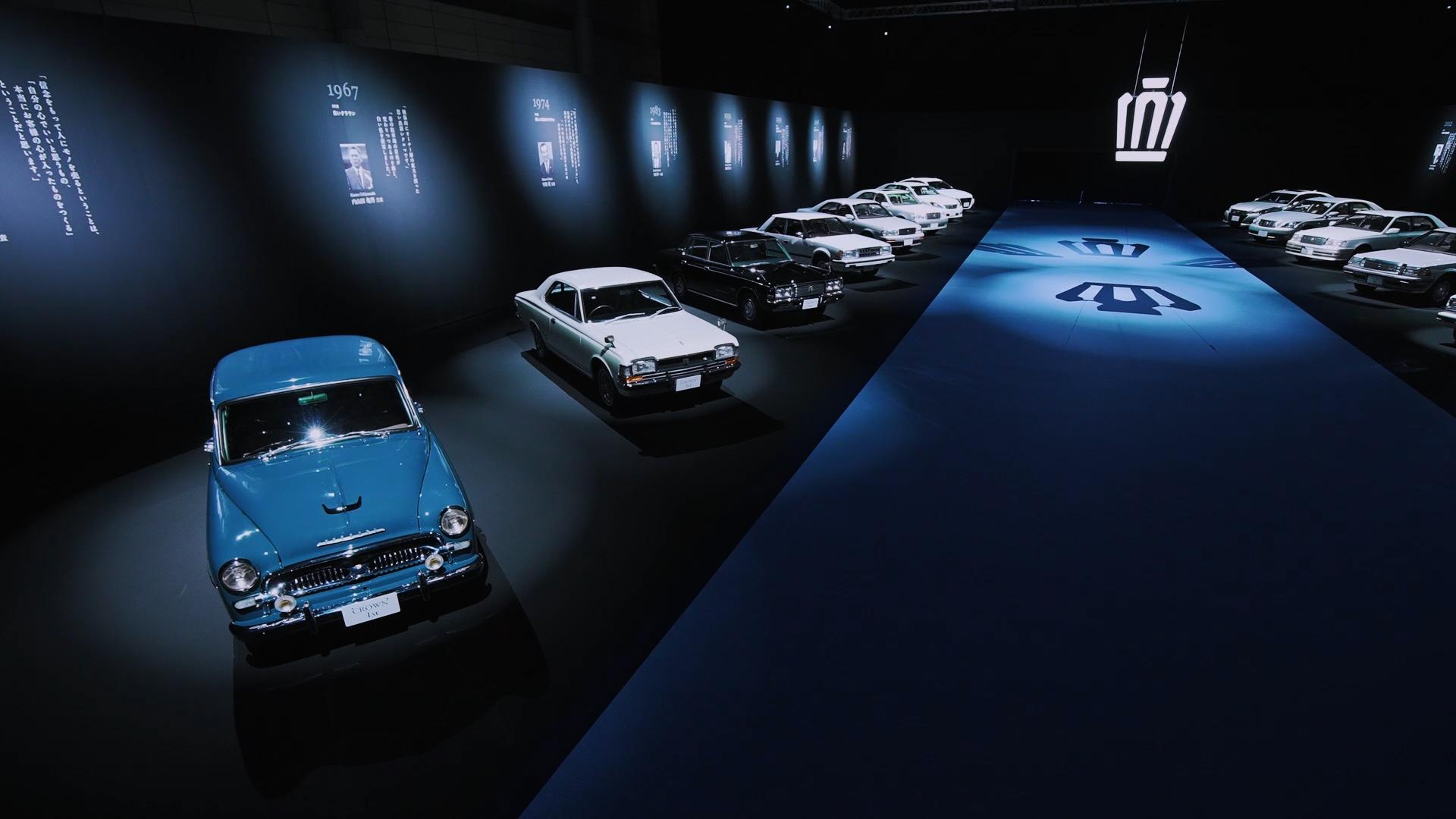
The 16th generation Crown has been reborn as something completely new. What has changed, and what has been passed down? Akio Toyoda and Hiroki Nakajima discuss the twists and turns of the model's development.


On July 15, 2022, Toyota unveiled its all-new Crown. Taking the stage, President Akio Toyoda began with the following words.
“We arranged 15 generations of the Crown for you to see on the way in. Then came the time to develop the 16th generation. Even Japan’s final feudal dynasty happened to end after 15 generations. I was resolved to do whatever it takes to create a new era for the Crown.”
The Crown has long reigned as a cornerstone of Toyota’s lineup and a dream car for many Japanese people. However, as customers move away from sedans in recent years, the model has lost some of its former luster.
Now the Crown has once again been reborn as Toyota’s flagship model. Drawing a comparison with Japan’s final feudal dynasty, which ended after 15 generations, the 16th-generation Crown ushers in a new era. What sort of car will it be? For an automotive industry undergoing a once-in-a-century upheaval, will it prove as transformative as the events that modernized Japan?
“When I first saw this new Crown, I said: ‘This looks interesting.’ And when I got out of the car after driving it, I said: ‘Now that is a Crown.’ ... Everyone, please witness the dawn of a new era!”
With these words, unveiled on the stage were four Crowns, each with a unique profile. Toyota had developed an entire Crown series with four distinct variations.
I believe that the philosophy of producing happiness for all has been at the core of the Crown. The new Crown is full of Japan’s underlying strengths. The new Crown will be available in approximately 40 countries and regions. We hope to create a new story for Japan’s Crown with all of you.
An unprecedented, eye-opening rejection

Toyota Times spoke with Akio and Mid-size Vehicle Company President Hiroki Nakajima after the premiere presentation to hear their thoughts on the new Crown, along with the captivating story behind its development.
The decision to develop an all-new Crown was sparked by plans for a partial redesign of the previous generation some two years earlier. Nakajima recalls how, at the product and design decision meeting, Akio’s face darkened on seeing the proposed design.
That meeting was supposed to give the final go-ahead for the product plan; normally, a rejection at that stage would be inconceivable. As a result, the Crown’s partial redesign plans were scrapped at the meeting, which marked a first for Toyota.
In fact, as far back as the Crown’s 13th generation, Akio recalls talking about how Japan’s feudal dynasty had ended at 15. His thinking was, “rather than just bringing out new models when the time comes, model changes should mean something.”
It was really a moment that opened our eyes. Down to the frontline developers, it instilled a strong commitment to building a new Crown. Thanks to that, Chief Engineer Akihiro Sarada’s team moved very fast.
From then on, we turned to President Toyoda when there was a difficult issue, and he advised us on how to proceed. I feel like that sort of relationship began with this Crown.
Akio:
From my perspective, this opportunity led us to truly embrace making ever-better cars. If I said something, the engineers and designers would suggest smarter solutions and ways to make the car better, and that dialogue really seemed to click for the first time.
The question, then, was how to make the Crown an ever-better car. To begin with, what was it that made a car a Crown? In a way, searching for freedom from the Crown’s unspoken conventions proved to be a roadblock for the development team. To guide the way, they turned to the chief engineers of the past Crowns.
The essence of a Crown is hard to pin down. What exactly makes a Crown? When the president posed that question, I had no answer for him. We set about unraveling the history behind the car, which led us to the chief engineers. Sifting through the developers’ words gave us a keen understanding of their intent and how they sought to bring happiness to customers through the cars they built.
First and foremost, it’s about people and emotions. Without that starting point, we just have an empty form. Customers will ultimately overlook a car consisting of only superficial technologies. It needs to carry the vision of its makers and the spirit of its customers. The quality, comfort, and the diverse people who drive it—all these aspects interweave to make a Crown. It’s not just one single element.
When first seeing the Crown’s new Crossover design, Akio said, “This looks interesting.” Nakajima had hoped the president would acknowledge the car as a true Crown, but that moment only came after Akio had taken it for a drive. “Now that is a Crown,” he said upon returning. As Nakajima recalls, the entire development team was elated.
Nakajima expressed his commitment to continue improving the car, to ensure that customers came away with the same impression after driving—“Now that is a Crown.”
“How about making a sedan, too?”

With the Crossover nearing the end of development and essentially green-lighted, Akio suddenly turned to Nakajima during one test drive and said, “How about making a sedan, too? ”
“At that moment, my jaw just dropped,” recalls Nakajima with a laugh. After all, the 16th generation Crown had started as a move away from sedans. For Nakajima, whose development team had gone back to the fundamentals to create the Crossover that was finally nearing completion, Akio’s comment must have been a bolt out of the blue.
It was only later I realized that our changed mindset and candid relationship with the president is what led to his suggestion of making a sedan. At the time I was just stunned.
Akio:
I can imagine. But the sedan is the Crown’s true form. I don’t think it’s right to deviate from that. So now that we have the Crossover, I thought, what about returning to the sedan? And then one day, he brought me two more! I was like, “hang on a minute!”
Nakajima:
I admit I got carried away.
Akio:
I thought, “Can you really manage that?”. But thinking about it now, I think we had a good dialogue. Our way of making ever-better cars is really taking shape, and I’m pleased about that.
Development motto: “Your Flagship”

The Crown is universally recognized as the flagship model of the Toyota brand. At the same time, Nakajima wanted the car to be a flagship for every customer, leading to his development team’s motto, “Your Flagship.”
“For a mass-market carmaker, the flagship must come with a full lineup,” says Akio. “That was the solution the development team came up with.”
And yet, it’s still a Crown. That doesn’t change. It has only become more diverse. After all, it’s going out to the whole world.
In my experience, the Crown was the car a cool dad would typically drive. If a woman were driving it, people would assume it was her husband’s car. If it were a young driver, people would think it was their father’s.
With this series, no matter which you choose to drive, there’s a car for everyone—my Crown. That’s how I see it.
Nakajima:
When people drive these cars, we want them to feel completely satisfied by doing things like going for a drive as a reward after a hard day’s work. If they can relax and feel this way, then I think we can say it’s a good car. We will keep working hard to ensure that customers have such an experience.
“How much I love the Crown”

The venue for the premiere featured a display of all 15 Crown generations. For Akio, who felt a personal connection to each of these 15 cars, the sight reaffirmed “how much I love the Crown.” He also realized that “it is part of who I am today. I grew up with the Crown and learned a lot from it.”
Reflecting on Toyota’s motorsports-driven car development and the construction of Fuji Motorsports Forest, Akio felt that all of these projects could be traced back to his formative experiences with the Crown. He shared his special fondness for the second-generation Crown, which was with him from ages 6 to 12.
At the first Japanese Grand Prix, the Crown won, along with the Corona and Publica. My father would take me to watch the Japanese Grand Prix as a birthday present, and we always traveled in the second-generation Crown.
Nakajima:
Listening to your presentation, I can really feel your love for the Crown.
Akio:
Even I noticed it myself. At today’s unveiling, what I most wanted to get across is that Toyota will once again take on the world.
Amid a sense of stagnation in Japan, Akio wanted to give that encouraging message at the day’s event.
Although Akio had the same motivation when becoming president over a decade ago, he says that at the time the company lacked product advantage. Now, Toyota has not only Japan’s star player in the Crown but also staff who have answered the call to make ever-better cars, as well as suppliers and dealers who endorse the company’s approach. Akio strongly expressed his gratitude to all these people.
A recently published book examined Akio’s management as akin to the “Iemoto (master of the house)” structure in traditional Japanese culture. This management style systematizes the keys to Toyota’s strength as its “philosophy, skills, and conduct.” Regarding those skills, Akio reflected on the importance of Toyota’s chief engineer system, saying, “It was the chief engineers who, over many years, established Toyota’s system for developing cars.” For their efforts, he shared words of appreciation. “Thank you.”
From here on, we’ll do our part. We’ll continue to hone these skills and keep passing the baton forward. Our products will be the fruits of those efforts, and we’ll work hard to make it happen.

